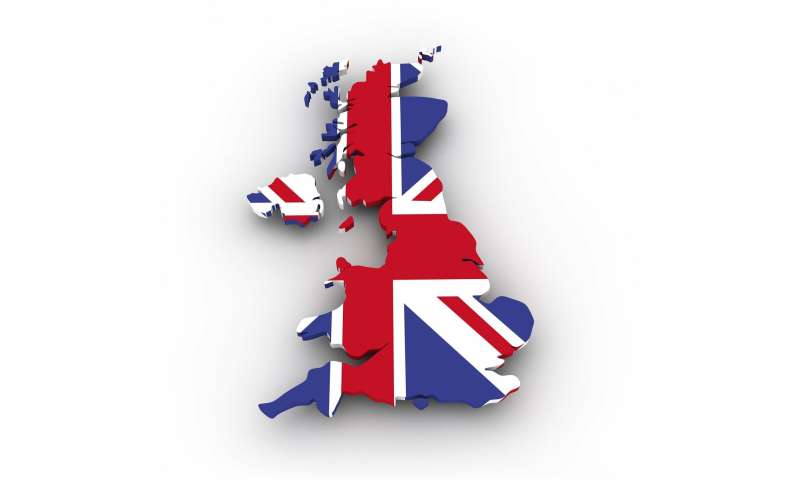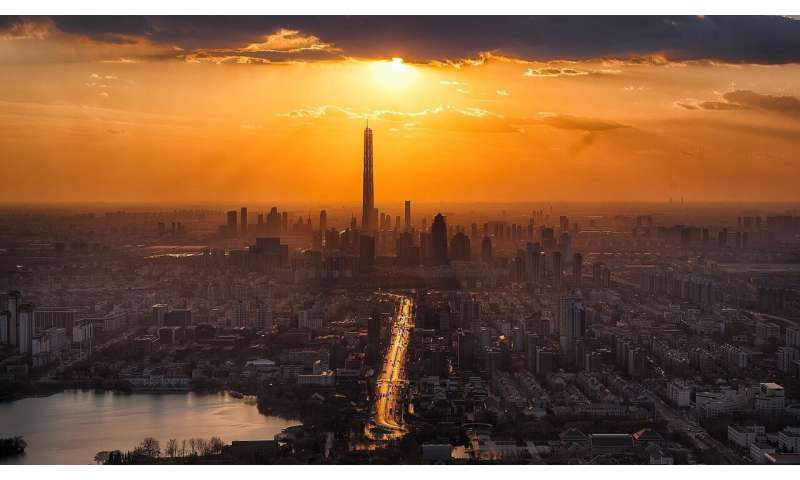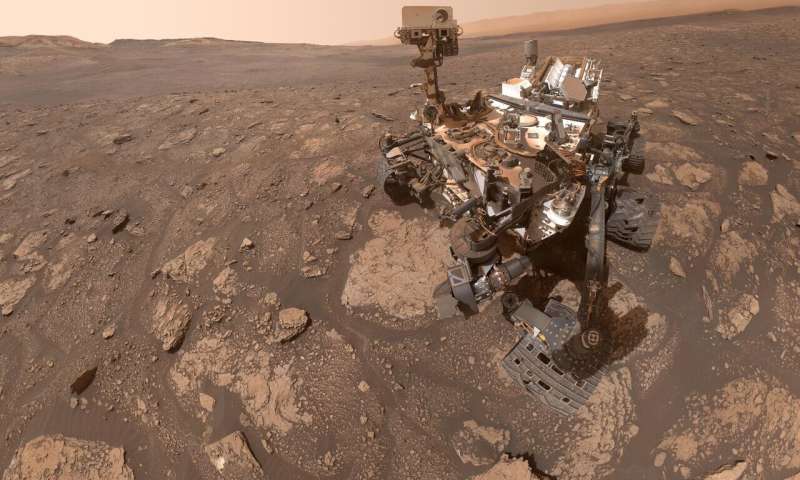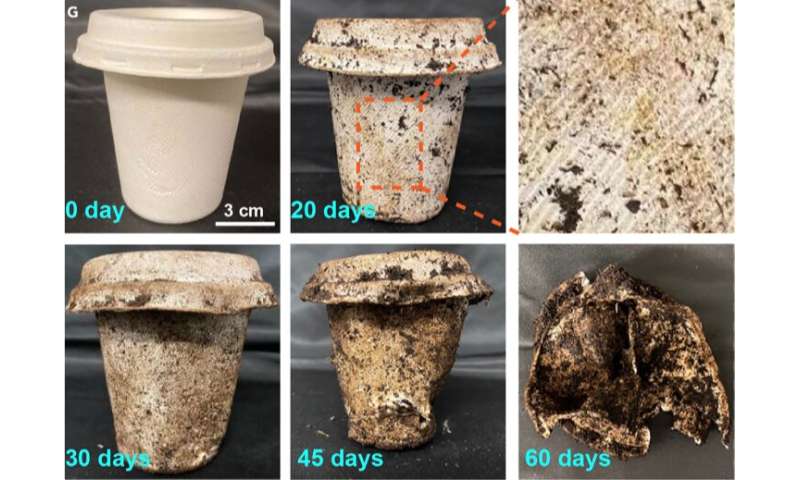by The Henryk Niewodniczanski Institute of Nuclear Physics Polish Academy of Sciences
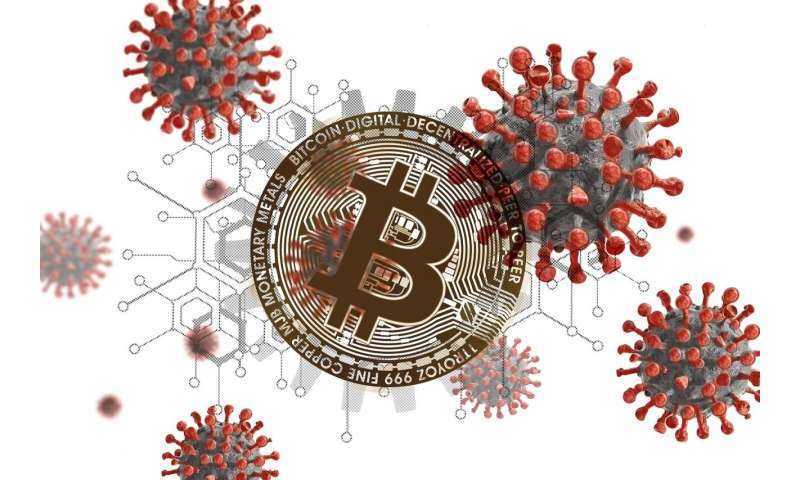
Cryptocurrencies have proven to be a safe financial haven during the COVID-19 pandemic. Credit: Gerd Altmann via Pixabay
The SARS-CoV-2 coronavirus pandemic has left a significant footprint on the global economy. For this reason, it had a substantial impact on the behavior of all financial instruments, including cryptocurrencies. It turns out that the fluctuations experienced by the virtual currency market during this period reflect changes in other capital and commodity markets. This market has also shown relative stability during this difficult time. It is another proof that cryptocurrencies can be treated as a mature and full-fledged financial instrument.
Social systems are characterized by a vast network of connections and factors that can influence their structure and dynamics. Among these systems, the entire economic sphere of human activity seems to be the most interconnected and complex. All financial markets belong to this sphere, including the youngest of them—cryptocurrencies.
The first cryptocurrency—Bitcoin—appeared in 2008 at the height of the global financial crisis. Its creators intended to provide a tool for carrying out transactions via the Internet without the participation of a central unit managing the issue of money. From this perspective, cryptocurrencies can be considered as an independent financial instrument. However, has the cryptocurrency market lived up to the hopes placed in it? How did it react to the situation caused by the emergence of crisis conditions? And have cryptocurrencies already reached the maturity and stability required of a full-fledged financial instrument?
Events related to the outbreak and development of the COVID-19 epidemic provided an excellent opportunity to seek answers to these questions. A group of scientists from the IFJ PAN in Krakow lead by Prof. Stanislaw Drozdz decided to study the behavior of the cryptocurrency market in response to the economic situation caused by the coronavirus.
"Our previous quantitative analyses of the various characteristics of the complexity of the cryptocurrency market and the specifics of its correlation with more traditional world markets, such as stocks, currencies or commodities, showed that this market in these aspects became essentially indistinguishable and independent from them. With the pandemic ahead, however, we seriously considered the possibility that investors would start to get rid of something like Bitcoin in the first place. Due to their virtuality, most potential market participants still perceive cryptocurrencies as quite peculiar items. In times of crisis, during violent economic and political turmoil, people resort to financial resources they consider more reliable. But our comparisons showed that solid instruments recorded drops at the most critical moments, while cryptocurrencies behaved much more stable," says Prof. Drozdz.
In the first phase of the pandemic, when it was not known how the whole situation would develop, there was an escape from risky financial instruments to Bitcoin. One could observe a positive correlation of Bitcoin with financial instruments considered safe, such as the Swiss franc, Japanese yen, gold and silver. Then there was a further increase in the number of infections around the world and the associated sharp drops in global stock markets—especially in the US—due to a total sell-off of all assets, including Bitcoin. Investors resorted to cash, mainly the yen and the dollar. During this period, Bitcoin lost its safe-haven status, but the same was true of gold and silver. Still, it behaved like a regular, traditional, and reliable financial instrument. Particularly significant is the correlation of Bitcoin (BTC) and ethereum (ETH) with conventional financial instruments during the spikes on global stock exchanges as the epidemic slows down during the summer of 2020.
"This is an intriguing effect because there were no such correlations before the pandemic, and they remain at a significant level. It may be proof that Bitcoin has become a full-fledged element of the financial market. One can say that the COVID-19 pandemic has positively verified cryptocurrencies. It turned out that investors were not afraid of Bitcoin; quite the opposite—they included it in their investment portfolios," Dr. Marcin Watorek describes the research findings.
Scientists from Krakow focused on the dynamic and structural properties of the cryptocurrency market. They analyzed data showing the exchange rates of 129 cryptocurrencies on the Binance platform. The analysis consisted of three parts aimed at examining a different aspect of the market structure.
"We approached the topic from three standpoints: the dynamics of the cryptocurrency exchange rates to other virtual and fiat currencies, coupling and decoupling of cryptocurrencies and traditional assets, and the inner structure of the cryptocurrency market. We used data from January 2019 to June 2020. This period covers the specific time of the COVID-19 pandemic; we paid special attention to this event and examined how strong its impact was on the structure and dynamics of the market. The analyzed data include several other significant events, such as the double bull and bear phase in 2019," Dr. Jaroslaw Kwapien explains the methodology of the work.
The analysis of the cross-correlation between the cryptocurrency market represented by the BTC/USD and ETH/USD exchange rate and the traditional markets of major fiat currencies, major commodities (such as oil and gold) and US stock indices led to the conclusion that the cryptocurrency market was independent of other markets throughout 2019, but temporarily correlated with these markets during several events in the first half of 2020, such as in January, when the first COVID-19 case was reported in the United States, in March during the pandemic outbreak, and from May to July 2020 during the second wave of the pandemic. In the first case, Bitcoin showed anti-correlation with major stock indices such as the S&P500 and Nasdaq100, but in the second and third cases, the corresponding correlations were positive. The correlations between Bitcoin and several fiat currencies and the commodity market were also positive for these phases.
The lack of statistically significant correlations in 2019, when classic financial instruments experienced no turmoil, was presumably due to market cap asymmetry between the cryptocurrency market and conventional markets to the disadvantage of the former, which is still too small to have any significant impact on other markets. However, traditional markets can easily influence the cryptocurrency market when they become turbulent. This is what happened in March and June 2020.
"The most significant result of our analyses of the dynamics of the world's financial markets during the COVID-19 pandemic is that the cryptocurrency market, and especially Bitcoin, turned out to be one of the most resistant to turbulence experienced by all global markets during this period. This observation is in line with and complements our previously published results on the approached stability and maturity of the cryptocurrency market in the past 2-3 years. The COVID-19 period seems to confirm those earlier signals," Prof. Drozdz summarizes the work.
Explore further Virtual gold? Bitcoin's rise sparks new debate amid pandemic
More information: Stanisław Drożdż et al, Complexity in Economic and Social Systems: Cryptocurrency Market at around COVID-19, Entropy (2020). DOI: 10.3390/e22091043
Provided by The Henryk Niewodniczanski Institute of Nuclear Physics Polish Academy of Sciences
The SARS-CoV-2 coronavirus pandemic has left a significant footprint on the global economy. For this reason, it had a substantial impact on the behavior of all financial instruments, including cryptocurrencies. It turns out that the fluctuations experienced by the virtual currency market during this period reflect changes in other capital and commodity markets. This market has also shown relative stability during this difficult time. It is another proof that cryptocurrencies can be treated as a mature and full-fledged financial instrument.
Social systems are characterized by a vast network of connections and factors that can influence their structure and dynamics. Among these systems, the entire economic sphere of human activity seems to be the most interconnected and complex. All financial markets belong to this sphere, including the youngest of them—cryptocurrencies.
The first cryptocurrency—Bitcoin—appeared in 2008 at the height of the global financial crisis. Its creators intended to provide a tool for carrying out transactions via the Internet without the participation of a central unit managing the issue of money. From this perspective, cryptocurrencies can be considered as an independent financial instrument. However, has the cryptocurrency market lived up to the hopes placed in it? How did it react to the situation caused by the emergence of crisis conditions? And have cryptocurrencies already reached the maturity and stability required of a full-fledged financial instrument?
Events related to the outbreak and development of the COVID-19 epidemic provided an excellent opportunity to seek answers to these questions. A group of scientists from the IFJ PAN in Krakow lead by Prof. Stanislaw Drozdz decided to study the behavior of the cryptocurrency market in response to the economic situation caused by the coronavirus.
"Our previous quantitative analyses of the various characteristics of the complexity of the cryptocurrency market and the specifics of its correlation with more traditional world markets, such as stocks, currencies or commodities, showed that this market in these aspects became essentially indistinguishable and independent from them. With the pandemic ahead, however, we seriously considered the possibility that investors would start to get rid of something like Bitcoin in the first place. Due to their virtuality, most potential market participants still perceive cryptocurrencies as quite peculiar items. In times of crisis, during violent economic and political turmoil, people resort to financial resources they consider more reliable. But our comparisons showed that solid instruments recorded drops at the most critical moments, while cryptocurrencies behaved much more stable," says Prof. Drozdz.
In the first phase of the pandemic, when it was not known how the whole situation would develop, there was an escape from risky financial instruments to Bitcoin. One could observe a positive correlation of Bitcoin with financial instruments considered safe, such as the Swiss franc, Japanese yen, gold and silver. Then there was a further increase in the number of infections around the world and the associated sharp drops in global stock markets—especially in the US—due to a total sell-off of all assets, including Bitcoin. Investors resorted to cash, mainly the yen and the dollar. During this period, Bitcoin lost its safe-haven status, but the same was true of gold and silver. Still, it behaved like a regular, traditional, and reliable financial instrument. Particularly significant is the correlation of Bitcoin (BTC) and ethereum (ETH) with conventional financial instruments during the spikes on global stock exchanges as the epidemic slows down during the summer of 2020.
"This is an intriguing effect because there were no such correlations before the pandemic, and they remain at a significant level. It may be proof that Bitcoin has become a full-fledged element of the financial market. One can say that the COVID-19 pandemic has positively verified cryptocurrencies. It turned out that investors were not afraid of Bitcoin; quite the opposite—they included it in their investment portfolios," Dr. Marcin Watorek describes the research findings.
Scientists from Krakow focused on the dynamic and structural properties of the cryptocurrency market. They analyzed data showing the exchange rates of 129 cryptocurrencies on the Binance platform. The analysis consisted of three parts aimed at examining a different aspect of the market structure.
"We approached the topic from three standpoints: the dynamics of the cryptocurrency exchange rates to other virtual and fiat currencies, coupling and decoupling of cryptocurrencies and traditional assets, and the inner structure of the cryptocurrency market. We used data from January 2019 to June 2020. This period covers the specific time of the COVID-19 pandemic; we paid special attention to this event and examined how strong its impact was on the structure and dynamics of the market. The analyzed data include several other significant events, such as the double bull and bear phase in 2019," Dr. Jaroslaw Kwapien explains the methodology of the work.
The analysis of the cross-correlation between the cryptocurrency market represented by the BTC/USD and ETH/USD exchange rate and the traditional markets of major fiat currencies, major commodities (such as oil and gold) and US stock indices led to the conclusion that the cryptocurrency market was independent of other markets throughout 2019, but temporarily correlated with these markets during several events in the first half of 2020, such as in January, when the first COVID-19 case was reported in the United States, in March during the pandemic outbreak, and from May to July 2020 during the second wave of the pandemic. In the first case, Bitcoin showed anti-correlation with major stock indices such as the S&P500 and Nasdaq100, but in the second and third cases, the corresponding correlations were positive. The correlations between Bitcoin and several fiat currencies and the commodity market were also positive for these phases.
The lack of statistically significant correlations in 2019, when classic financial instruments experienced no turmoil, was presumably due to market cap asymmetry between the cryptocurrency market and conventional markets to the disadvantage of the former, which is still too small to have any significant impact on other markets. However, traditional markets can easily influence the cryptocurrency market when they become turbulent. This is what happened in March and June 2020.
"The most significant result of our analyses of the dynamics of the world's financial markets during the COVID-19 pandemic is that the cryptocurrency market, and especially Bitcoin, turned out to be one of the most resistant to turbulence experienced by all global markets during this period. This observation is in line with and complements our previously published results on the approached stability and maturity of the cryptocurrency market in the past 2-3 years. The COVID-19 period seems to confirm those earlier signals," Prof. Drozdz summarizes the work.
Explore further Virtual gold? Bitcoin's rise sparks new debate amid pandemic
More information: Stanisław Drożdż et al, Complexity in Economic and Social Systems: Cryptocurrency Market at around COVID-19, Entropy (2020). DOI: 10.3390/e22091043
Provided by The Henryk Niewodniczanski Institute of Nuclear Physics Polish Academy of Sciences
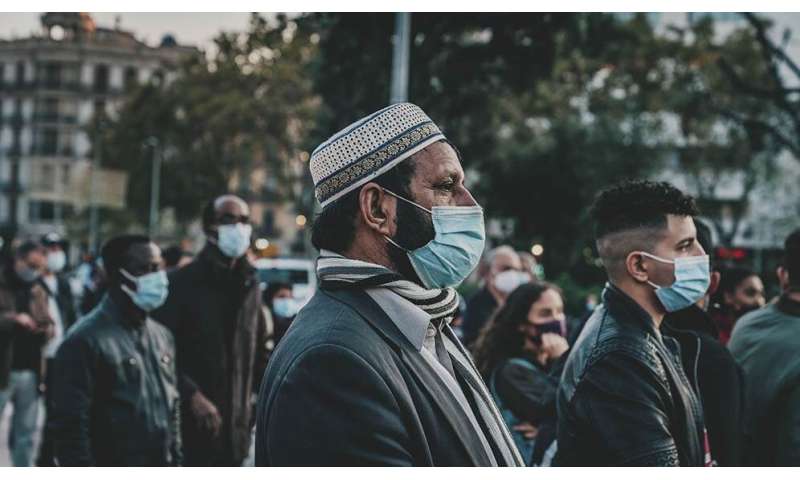
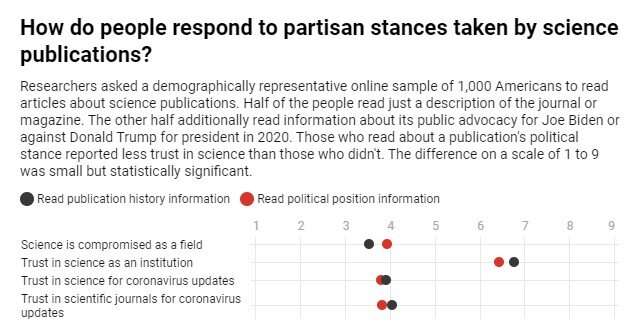 Credit: The Conversation
Credit: The Conversation


